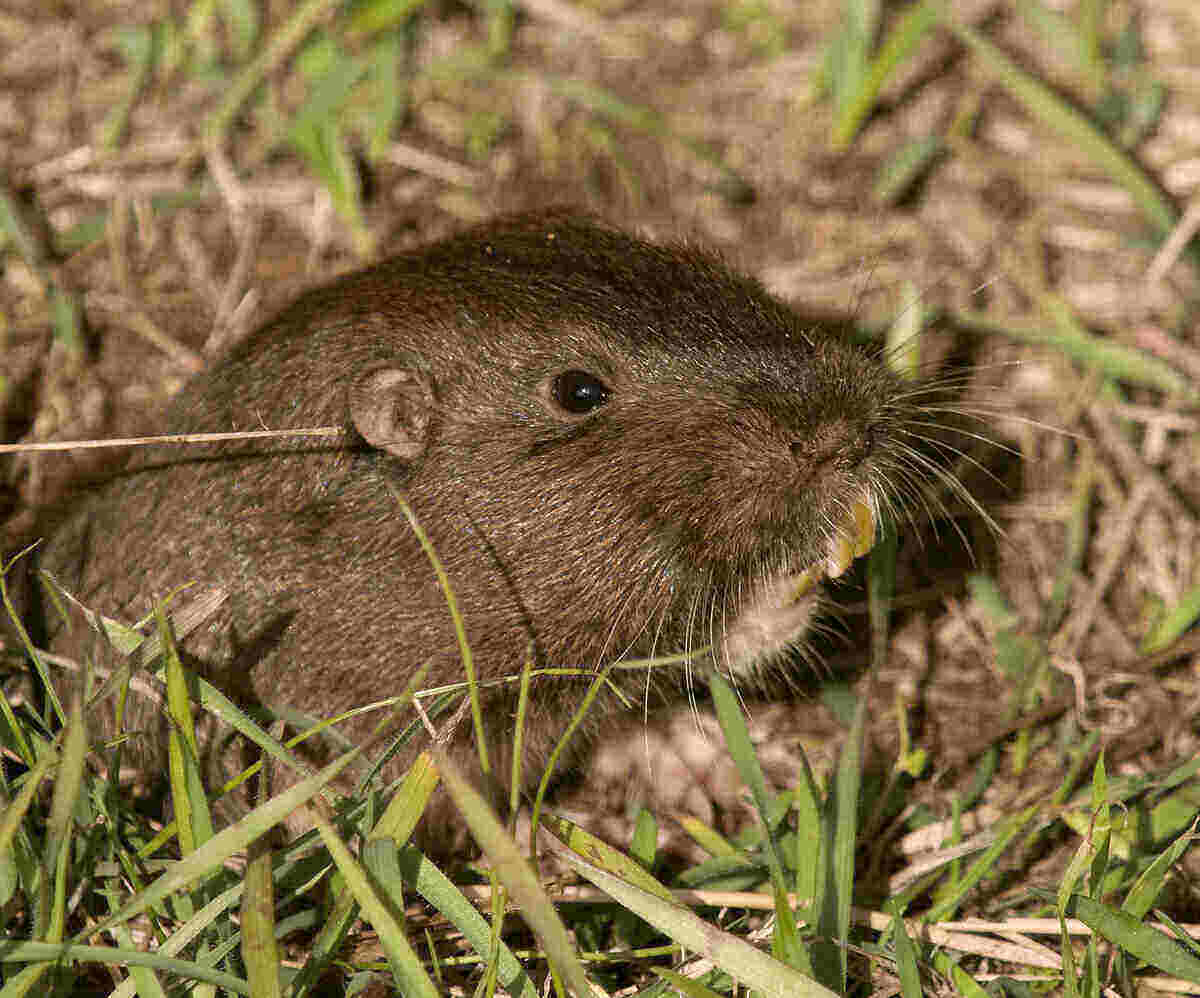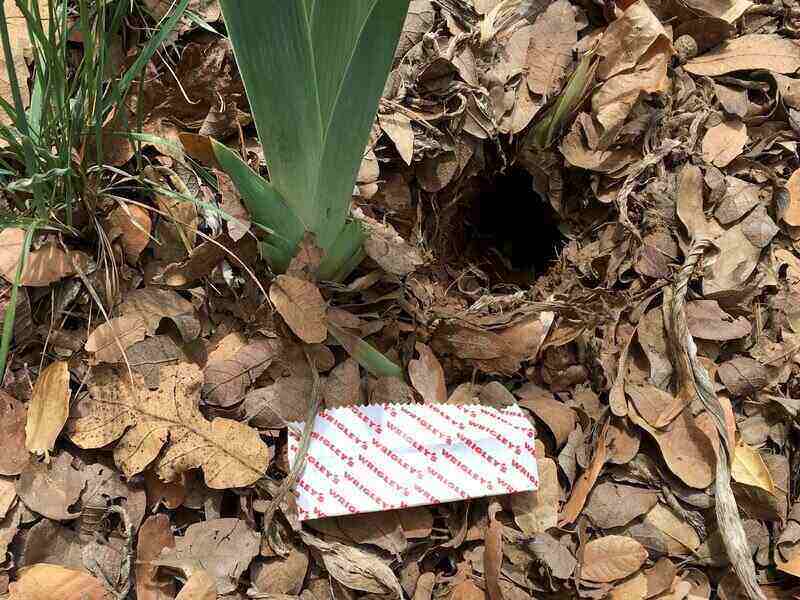
Gophers love to make a dramatic entrance, especially when digging their tunnel openings right in your backyard. Your mission is to show them the exit — or at least the way to a neighbor’s lawn. We’ve pulled together the best solutions on how to get rid of gophers in your lawn.
What Does Gopher Damage Look Like?
A clear sign of a gopher family damaging your land is mounds of dirt shaped like crescent moons or horseshoes. Next to the mound, you’ll find a plugged hole. Gophers will stop at nothing to get a nibble of your plants, damage your irrigation system, and build their tunnel fortress underneath your landscape. How’s that for dramatic?

Photo Credit: Alan Levine / Pxhere / CC BY 2.0
How to Get Rid of Gophers in Your Lawn
A single gopher can dig several mounds a day. Imagine the damage a whole gopher family can cause to your yard. Gophers gnaw on irrigation lines, sprinklers, and buried cables. Gophers also harm your plants’ roots. To avoid this damage, here’s how to get rid of gophers in your lawn.
Trapping
Trapping is an effective and nontoxic gopher control method for homeowners who prefer a humane approach. The best time to trap is in the fall and spring. Common live trap types include Victor Black Box, Macabee, Gophinator, and Cinch.
The key to setting these gopher traps is finding the main runway of a tunnel, which will be near a fresh mound.
Find a fresh gopher mound and probe for burrows around the hole, using a wooden dowel or something similar. You’ll have discovered the runway when your probe sinks 4 to 12 inches into the ground.
Stake down two traps into the tunnel facing each other. (Wear leather gloves to protect your hands.)
Pro Tip: If you do not catch a gopher within two to three days, move the traps to a different tunnel. You’ll have trapped your gopher(s) when no new mounds appear.
Poison Baits
This control method is a very effective way to kill gophers but can affect other animal populations such as owls, foxes, and coyotes. Follow all labeled directions when using poison baits.
Spring is the best time to use poison gopher baits, as this is when their food source is low.
- Probe for the main gopher tunnel (as above).
- Apply bait to the main runway tunnel.
- Plug the burrow holes after application.
Pro Tip: Check the area periodically for two weeks after initial treatment and remove any deceased gopher(s).
Underground Fencing
Underground fencing may not remove the gophers from your land, but the wire mesh can help deter them from your vegetable garden, plants, and flower beds.
Before planting:
- Bury hardware cloth or 3/4-inch mesh poultry wire at least 2 feet under raised beds.
- Bend 6 inches of mesh or wire at a 90-degree angle away from the plants.
- Wire baskets also can protect individual plants, but remember to leave enough room for the roots to grow.
Pro Tip: This solution can be ineffective against a rather persistent set of gophers who burrow under the wires. The wire does have the potential to restrict proper root growth.
Flooding
Flooding gopher holes may force the gophers out of their burrows and expose them to predators like hunting dogs.
Fumigation
Fumigation may seem like the perfect gopher exit strategy, but this method of gopher control doesn’t stand up against solutions like trapping and baiting.
Why? Fumigation isn’t very useful on gophers, because these pests are pros when it comes to sealing up their burrows for protection.
Barn Owls
Attracting barn owls to control your gophers is a natural solution, but it does come with limitations. For starters, you will need to install barn owl boxes to encourage barn owls to nest on your property.
While you may invite enough barn owls to prey on your gophers, barn owls like to range far from their nesting boxes for food. So even if your barn owl boxes attract barn owls, there is no guarantee the owls will target the gophers so near their home.
Bottom line: Barn owls for gopher control is often an unreliable solution.
Household Remedies for Gophers
Household and DIY remedies to get rid of other pests often are effective, environmentally safe, and save quite a few bucks. That’s not the case with gophers, though.
According to the University of California Agriculture & Natural Resources Program, popular household remedies such as gopher purge, mothballs, castor bean, and garlic haven’t been shown to repel gophers from an area.
Vibrating stakes, ultrasonic pest control devices, wind-powered pinwheels, and planting chewing gum or laxatives in burrows also are not recommended for gopher removal.
While some devices claim to frighten pocket gophers, these pests don’t scare easily. Their resistance is likely due to their exposure to noise and vibration from sprinklers and lawnmowers.
Gopher Repellents
According to the University of California program and the Utah State University Extension, there are no effective repellents available to protect plants from gophers.
FAQ About How to Get Rid of Gophers
Food. Gophers like to eat and they’ll build their homes anywhere that’s close to a food source. They’re herbivores and eat tubers, acorns, grass, and clover.
Gophers usually emerge in the evening hours or after the sunsets. They are active at all hours of the day and do not hibernate during the winter.
Gopher burrows are anywhere between 4 to 12 inches underground and about 2.5 to 3.5 inches in diameter. Gophers’ highly advanced burrow system may contain more than 500 tunnels and cover up to 2,000 square feet. Gophers keep their food storage chamber hidden away 6 feet beneath the surface.
When to Call a Pest Control Pro
If you have a persistent family of gophers, you may need to call an exterminator. A pest control professional near you has the tools and experience to show your burrowing friends the exit.
Main image credit: Chuck Abbe / Flickr / CC by 2.0